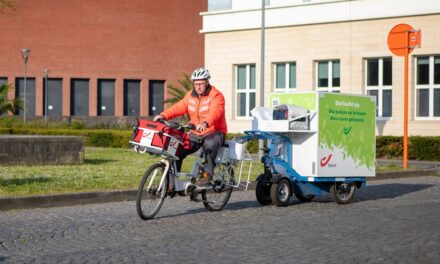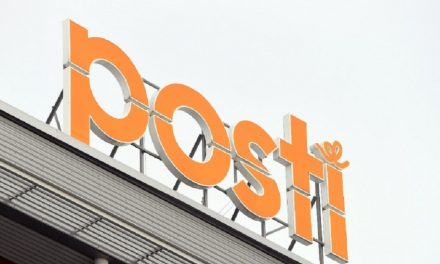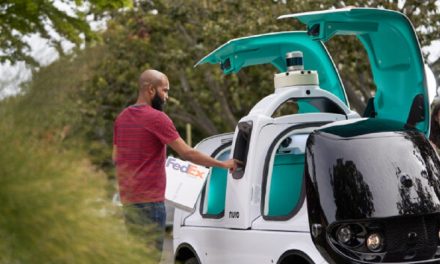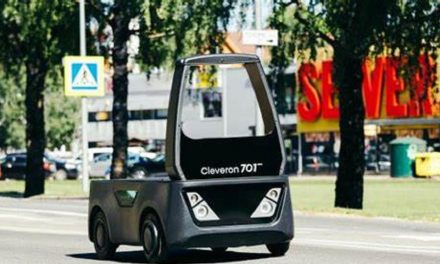
Intel sets out its IoT, drone and autonomous vehicle credentials at Developer Forum
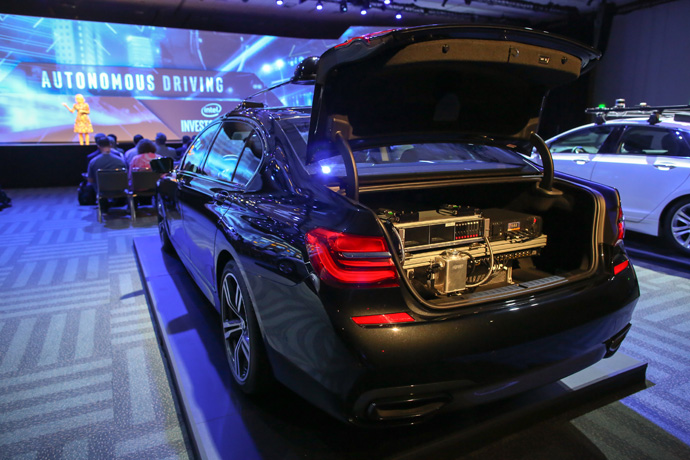
Computer giant Intel displayed its Internet of Things, drone and autonomous vehicle credentials at the recent Intel Developer Forum (IDF). The IDF, which drew more than 6,000 attendees to San Francisco last week, is a giant geek-souq crammed with new products, prototypes and concepts that span just about every kind of application – but there were a few items on show that we felt could be particularly interesting for Post&Parcel readers.
Intel is of course principally famous for its semiconductor chips. These are now not only powering computers across the planet but also becoming the building blocks for the Internet of Things.
As the both the size and relative cost of microprocessors have been driven ever downward, we are now reaching the point where chips can be produced which is no bigger than your fingertip and cheap enough to fit on a vast array of products and packages.
At last week’s IDF, Intel showed how its tiny IA-32 prototype “mote” chips could be integrated into smart labels on parcels, then used not only to communicate the location of the parcels but also to report on their shipping conditions in real time. The chips wouldn’t even need a battery, because they would be powered by a wireless network.
The location points of chip-equipped items around the globe form the dots for Internet of Things. The clever bit is in joining them all up and connecting them to the data centres. Intel believes it is ideally placed to do this by virtue of its pedigree in systems architecture, networking and cloud computing.
Doug Davis, senior vice president and general manager of Intel’s Internet of Things Group, outlined the company’s strategy for joining up the world – and then also mapped out its goals in the autonomous vehicle market.
Davis started by highlighting the “market opportunity” that autonomous vehicles represent. Intel believes that: “120 million vehicles with varying degrees of automation will be on our roads by 2030, creating massive societal and economic ripples.” Davis also shared predictions that the technology “could realize $1.3 trillion in savings for the U.S. economy, $507 billion gained in productivity, $488 billion in accident cost reductions and $138 billion in productivity savings from reduced congestion”.
Davis then set out why Intel believes it is “uniquely positioned to provide all of the components required to power fully autonomous driving with experience that spans the vehicle, communications and the data centre”.
That is, of course, a big claim; but Intel looked to back it up with more than a dozen demos at the IDF which showcased in-vehicle technologies, communications and analytics, artificial intelligence, machine learning, and the “human machine interface”.
Intel is actually building its own fleet of self-driving cars at the moment, and it had two test vehicles on show at the IDF.
And no forum or article about “futuristic” transport and supply chain trends could be complete without at least some mention of drones.
Intel used the IDF to promote its own Aero drone technology and also hosted a panel discussion session which featured a number of industry leaders, including:
- Ronie Gnecco, innovation manager for UAV Development & Applications, Airbus;
- Earl Lawrence, director, Unmanned Aircraft Systems Integration Office, Federal Aviation Administration;
- Shan Phillips, CEO, Yuneec USA;
- Art Pregler, UAS program director, AT&T.
They were joined by Intel’s own drone experts, Anil Nanduri and Natalie Cheung, to discuss the opportunities being opened up by new drone technologies and capabilities present new opportunities for drone developers.

